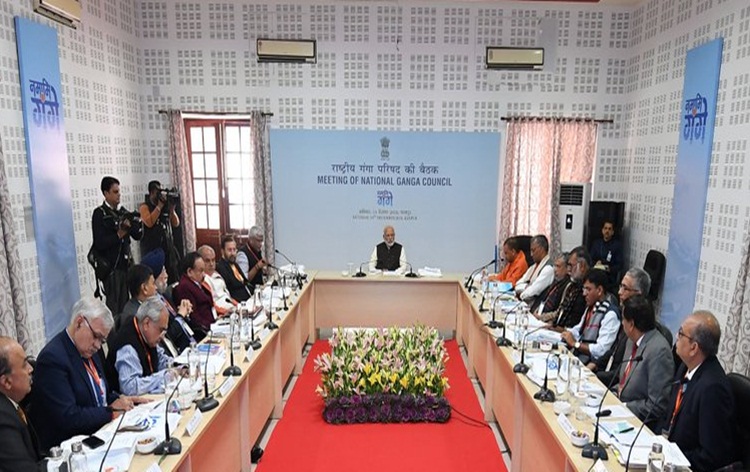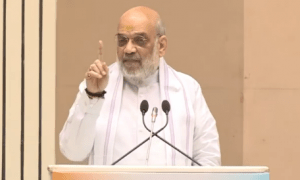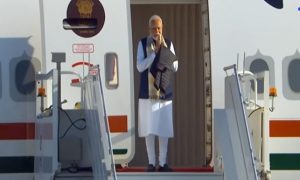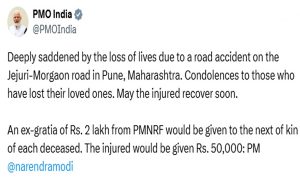Prime Minister Narendra Modi today chaired the first meeting of the National Council for Ganga and reviewed the progress of the Namami Gange project aimed at cleaning river Ganga.
Chief Minister of Uttar Pradesh, Yogi Adityanath, Chief Minister of Uttarakhand Trivendra Singh Rawat, Deputy Chief Minister of Bihar Sushil Modi, several union ministers, including Environment Minister Prakash Javadekar, Jal Shakti Minister Gajendra Singh Shekhawat, Dr. Harshvardhan, RK Singh, Prahlad Patel, Mansukh Mandavia, Hardeep Singh Puri and many officers of the central and state governments attended the meeting in Kanpur.
The Prime Minister reviewed the progress of work done and gave suggestions for cleaning the Ganga. Prior to the meeting, the Prime Minister visited an exhibition on Namami Ganga Mission, showcasing the work done for cleanliness of the Ganga.
AIR correspondent reports that, Mr Modi, accompanied by the Union ministers and the Chief Minister will go to newly built Atal Ghat near Ganga Barrage to assess changes under Namai Gange in the past few years.
Mr Modi will also take a selfie at the newly created selfie point at Seesmau nullah which was the largest drain falling in the river.
The 128-year old drain was a major contributor to the river’s pollution. Under Namami Gange Programme, 13 out of 16 major drains in Kanpur have been completely tapped and the sewage and industrial effluents have been diverted to Common Effluent Treatment Plants.
AIR correspondent reports that the first meeting of National Ganga council was scheduled for one hour 45 minutes but it extended for 40 minutes more and it shows that how important was this platform where many chief ministers and senior ministers gave their suggestions to clean the holy river.
The Kanpur stretch of river Ganga is considered to be most polluted segment of the river in its course from Gaumukh to Gangasagar. However with the launch of the Namami Gange Programme that aims to clean and rejuvenate Ganga, 13 out of 16 major drains in Kanpur have been completely tapped and the sewage and industrial effluent has been diverted to Common Effluent Treatment Plants, CETPs.




























 WhatsApp us
WhatsApp us